
- Restart the explorer.exe process
- Enter safe mode and undo recent changes
- Hard reset your laptop
- Reinstall your memory
- Have your laptop serviced
Method 1: Restart the explorer.exe process
You may get the black screen issue because the explorer.exe process on your computer has been closed (possibly by a virus). It is a process that manages the desktop, taskbar, etc, on your operating system. Closing it can make your desktop and taskbar invisible, and you get the black screen issue. To fix this issue, you can check and restart the process manually. To do so: 1) Press the Ctrl, Shift and Esc key on your keyboard at the same time. This will open Task Manager. 2) Click the Details tab (or the Processes tab in Windows 7’s Task Manager) and see if there exists a process called “explorer.exe”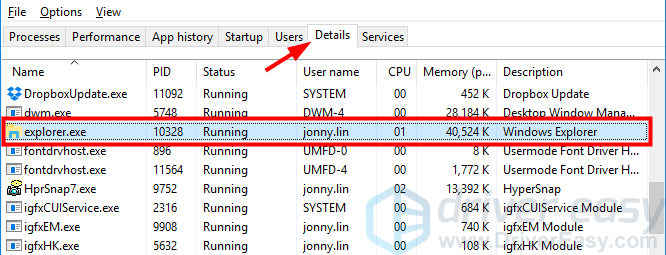
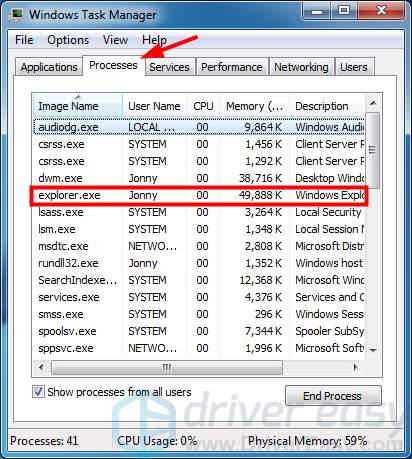
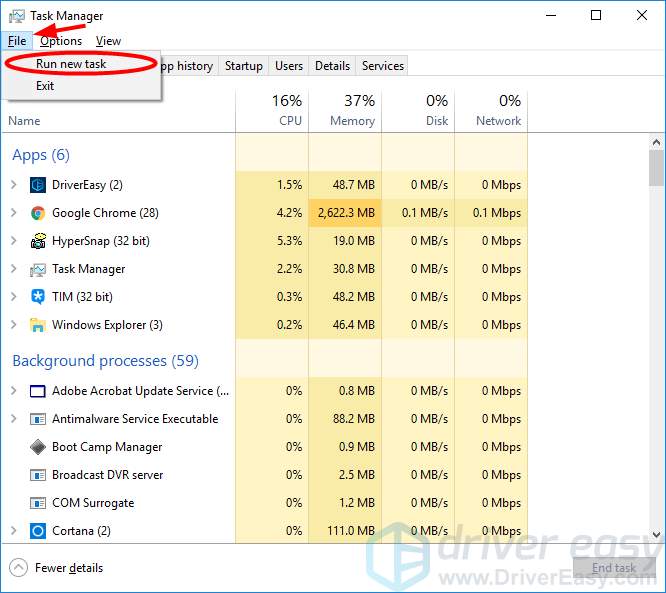

Method 2: Enter safe mode and undo recent changes
You may have change some settings or installed a program on your computer, which are incompatible with your operating system. And it causes the black screen problem of your laptop. You can try going into safe mode of your system and undo these changes. Safe mode is a diagnostic mode of your operating system. You can use it to troubleshoot issues on your computer. The method of entering safe mode varies depending on the Windows version you are using. You can check this guide to learn how to do this. When you are in safe mode, undo the recent changes you have made to the system settings. Or uninstall the program you have recently installed on your program. If you have updated your system right before you got the black screen issue, uninstalled these updates and contact Microsoft for advice. If you are not clear what you have changed, it is recommended that you use System Restore feature to revert your computer’s state.Method 3: Hard reset your laptop
Hard resetting your laptop can clear all the information in your memory and the charges in your laptop. This is helpful for restoring your laptop screen. To hard reset your laptop: 1) Turn off your laptop. 2) Disconnect all the peripheral devices on your laptop. 3) Remove the battery. (If it is not removable, skip this step.) 4) Disconnect the power cable from your laptop. 5) Press and hold the power button on your laptop for about one minute. 6) Connect the power cable to your laptop and turn it on. 7) Turn off your laptop. 8) Connect the battery to your laptop and turn it on. 9) If this method works for you, you will see there starts to be something showing up on your laptop screen. Note that this method may not be able to hard reset laptops of all makes. You can consult the official guides for your laptop for the proper way of hard resetting your device.Method 4: Reinstall your memory
It is also possible that your laptop screen issue comes from your laptop memory (RAM).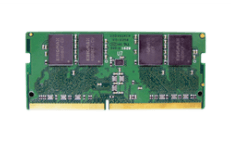
Method 5: Have your laptop serviced
If none of the methods above could help you, your issue may be a hardware problem that you can’t solve yourself. You may need to ask a computer expert to help you. If your laptop is still under warranty, you can contact the manufacturer of your device. They can check your laptop and get it repaired or replaced.Extra tips
If you have resolved the problem with your laptop screen, it is suggested that you try the things below to totally get rid of this issue and keep your computer healthy.1. Restore your system from a restore point
Once your laptop recovers, you can restore your Windows from a system restore point. This can prevent your computer from getting issues resulting from the previous changes you have made. Note that you can restore your system only when you have previously created a restore point. To restore your operating system: 1) Click the Start button in the bottom left corner of your screen. Then type “restore“. 2) Open the System Restore wizard from the list of result. The process is different depending on the operating system you use, and you will see from the following the different steps on Windows 7 and Windows 10. On Windows 7, just click System Restore in the search result: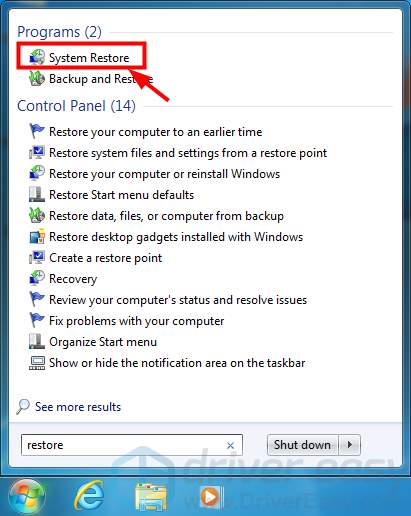
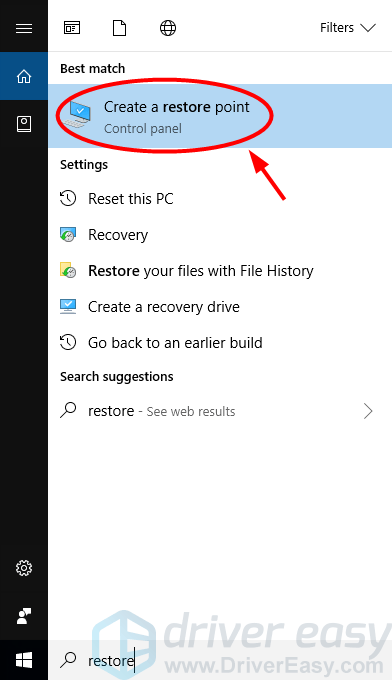
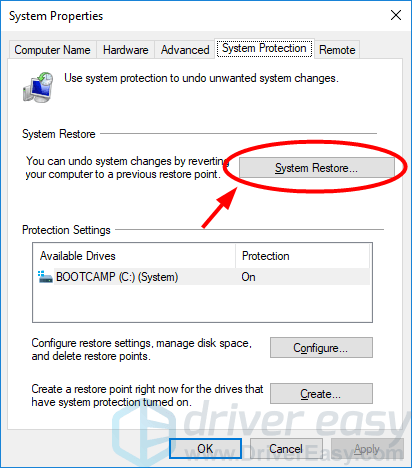
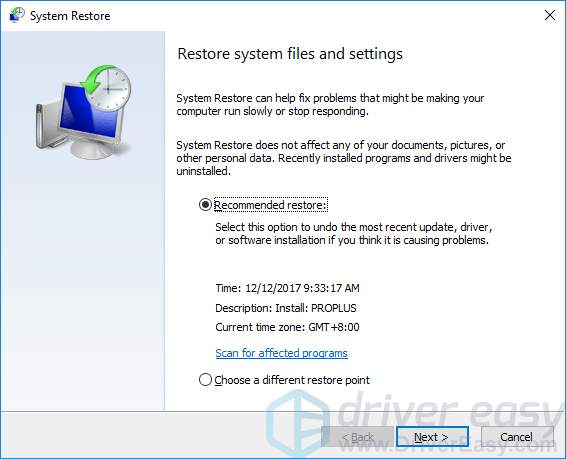
2. Update your device driver
You may get various hardware issues (not just this black screen one) if your device drivers on your computer are wrong or out of date. To keep your laptop healthy, you should make sure your drivers are updated. You can update your drivers manually, but the process can be very time- and energy-consuming. If you want it to be easier, you can use Driver Easy.

7
7 people found this helpful
Available in other languages
Bleibt Ihr Laptop-Bildschirm schwarz, nachdem Sie Ihren Laptop eingeschaltet haben? Hier bekommen Sie nach den Situationen entsprechende Lösungen.
1 Comment
Most Voted





